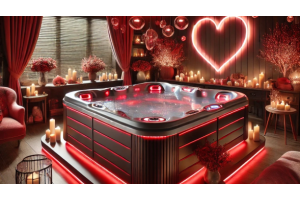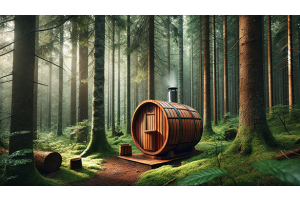How does ozone in a hot tub work?

Ozone in a hot tub works by using an ozone generator, which helps in sanitising the water.
Here’s a breakdown of the process:
Ozone Generation:
The ozone generator produces ozone (O₃), a molecule composed of three oxygen atoms. This is typically done using either a corona discharge method or an ultraviolet (UV) light method:
Corona Discharge (CD): An electrical discharge splits oxygen molecules (O₂) in the air, allowing individual oxygen atoms to recombine with other O₂ molecules, forming ozone.
Ultraviolet (UV): UV light is used to break down oxygen molecules to form ozone. This method is the most efficient as the ozone created destroys smaller bacteria molecules.
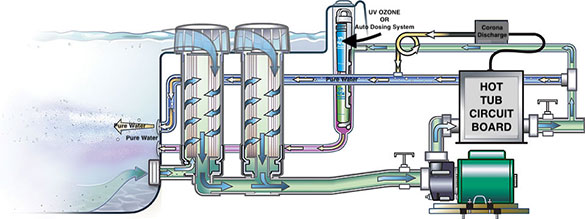

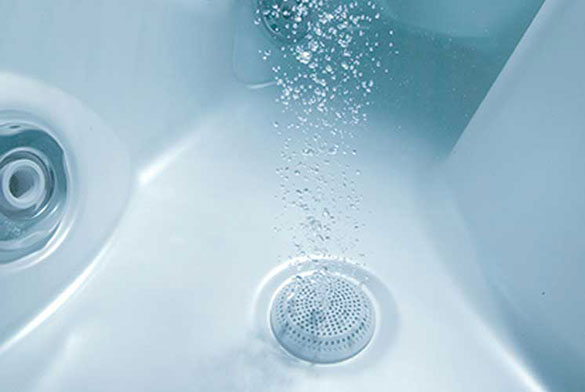

Injection into Water:
The produced ozone gas is then injected into the hot tub water through an injection system or a dedicated ozone jet.
Oxidation and Sanitisation:
Once in the water, ozone dissolves and reacts with contaminants:
Oxidation: Ozone oxidises organic and inorganic substances like oils, lotions, and dead skin cells, breaking them down into simpler, harmless compounds.
Sanitisation: Ozone is very effective at killing bacteria, viruses, and other microorganisms by disrupting their cell walls and causing cell lysis.
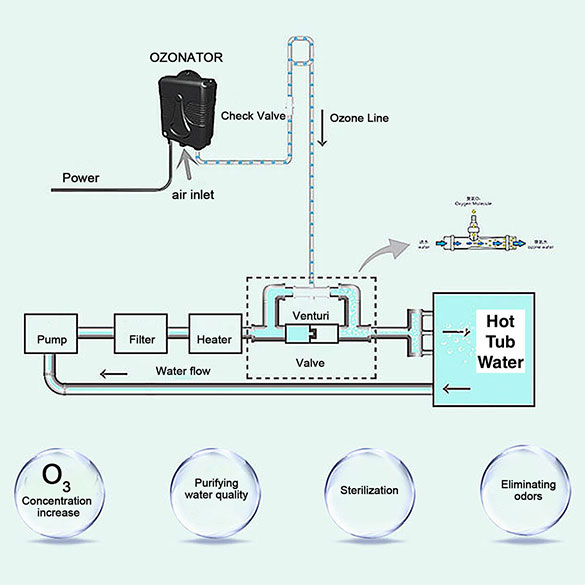

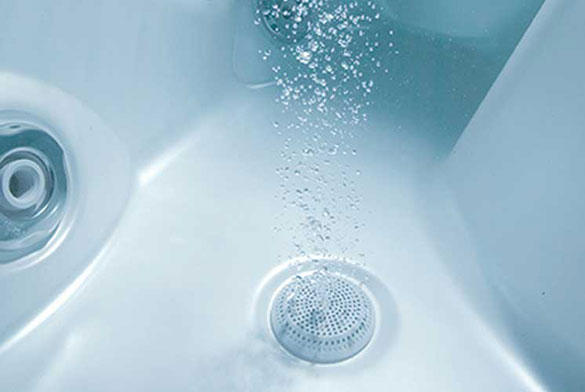

Turn Back to Oxygen:
Ozone has a short half-life and naturally reverts to oxygen (O₂) after it has finished reacting, leaving no residual substances in the water.
Once it is injected into the hot tub water, it naturally rises to the surface and eventually dissapates in the air (once the hot tub cover is removed).
So, the best ozone systems are those where the O3 is in contact with the most hot tub water, for the longest time. This means that the ozone is maximised, destroying most or all of the bacteria it comes into contact with, and therefore there is no residual gas to left to reach the surface.
Ozone systems are beneficial because they reduce the reliance on chemical sanitisers and improve water quality and clarity.
However, because ozone leaves no residual sanitising agent, it's important to use it in conjunction with a regular sanitiser like chlorine or bromine to ensure continuous disinfection and residual protection.
It is important to know that ozone is an irritant and if too much ozone is being discharged and reaching the surface water, it can cause skin irritaion. Furthermore, if too much ozone remains trapped underneath the cover for too long, the gas can corrode any vinyl or plastics that it come into contact with.
Always research and ensure that any ozone system meets industry standards, and has been passed and approved.




